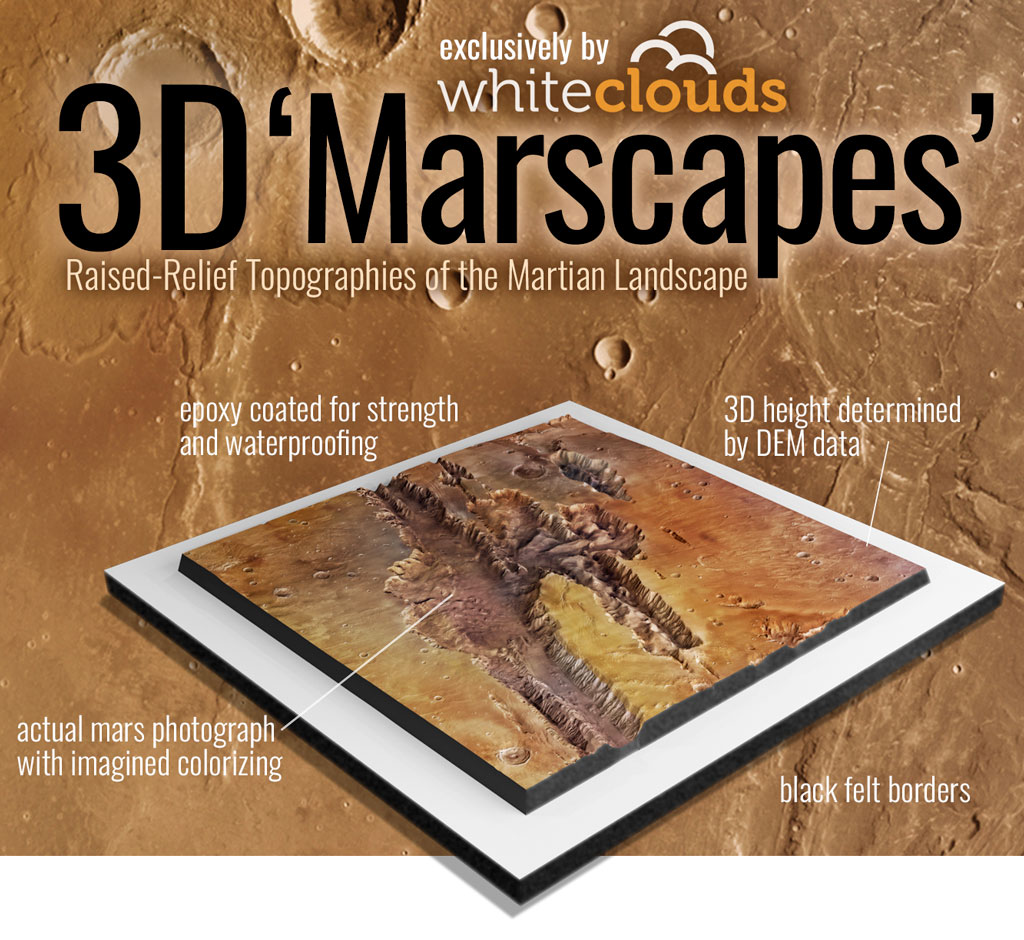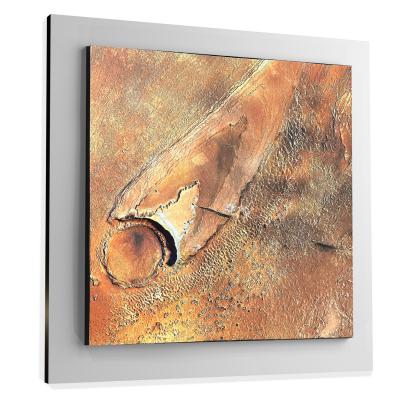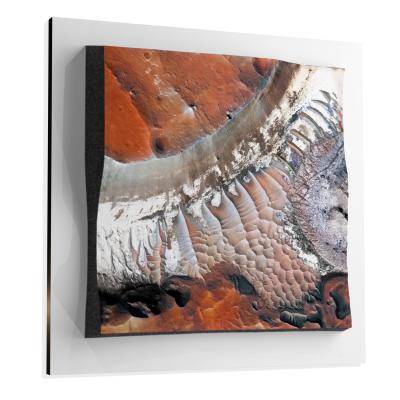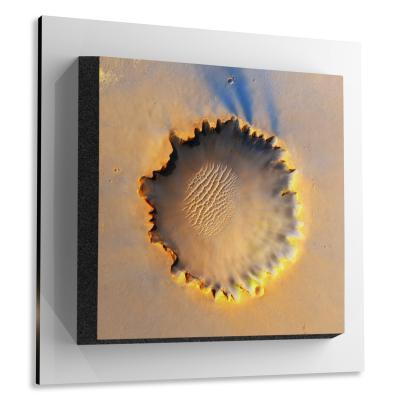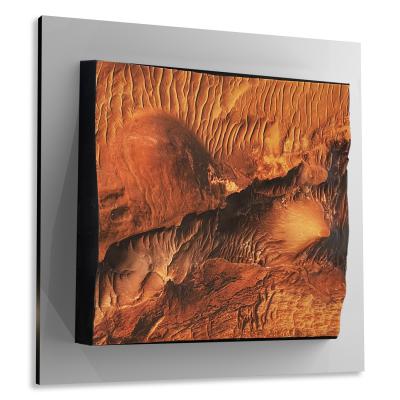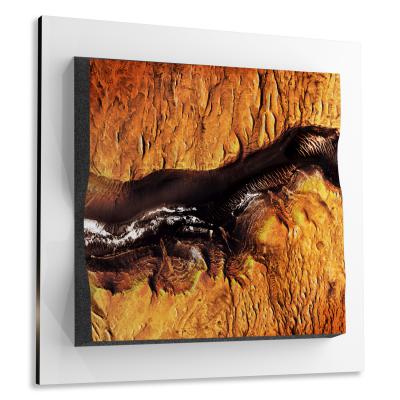Dunes on Mars
Dunes on Mars
We Build Custom 8K Mars Canvas Prints of Dunes on Mars
Did you know we make
custom
8K Mars Canvas Prints

and
3D Marscapes

Dunes on Mars
The Martian landscape, often characterized by its red, rocky terrains, is not just about craters and vast plains; it is also home to an intriguing array of dune fields. These dunes not only provide awe-inspiring visuals but are also rich sources of information about the planet’s geological history, atmospheric conditions, and even potential for future human exploration. This comprehensive report aims to delve deep into the fascinating world of Martian dunes, covering their types, characteristics, formation processes, and scientific significance.
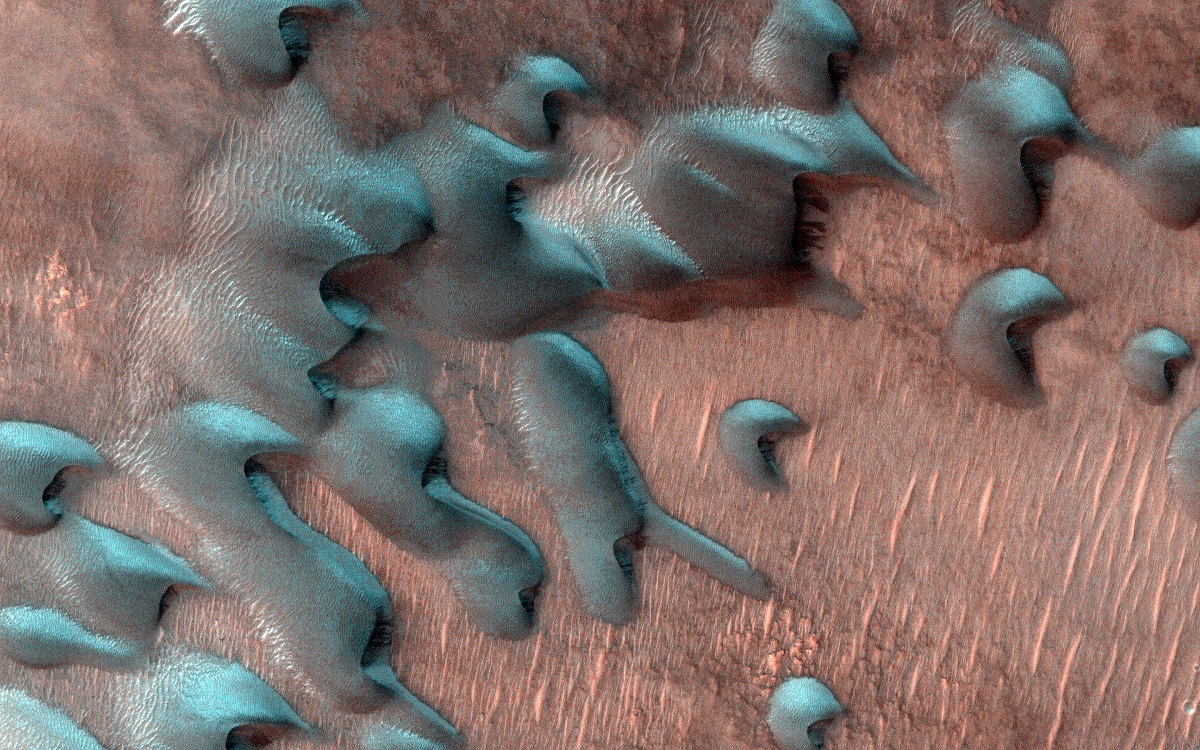 Frosted Dunes in the Depths of Winter
Frosted Dunes in the Depths of Winter
Types of Martian Dunes
Barchan Dunes
Resembling crescent moons with their tips oriented in the direction of prevailing winds, Barchan dunes are some of the most frequently occurring dunes on Mars. They are predominantly found in places where sand is scarce but where strong and unchanging winds are prevalent. These dunes offer more than just an aesthetic value; they serve as natural indicators or wind vanes, shedding light on the dominant wind directions in different regions of the Martian landscape.
Transverse Dunes
Contrary to Barchan dunes, Transverse dunes manifest themselves as wave-like structures running at right angles to the dominant wind directions. They usually come into existence in locations rich in sand, suggesting that these areas have been subject to consistent wind patterns over extended timeframes. The orientation of these dunes is especially intriguing as it hints at stable, long-standing atmospheric conditions that have allowed such formations to develop and persist.
Star Dunes
Star dunes are a study in complexity, sculpted by winds coming from multiple directions. They exhibit an intricate, multi-armed configuration, extending their arms like a starfish across the Martian terrain. While they are relatively uncommon in comparison to other dune types, their existence is invaluable to scientists. Star dunes serve as a veritable library of information on the multifaceted and variable wind conditions that have shaped the Martian surface over eons.
Linear Dunes
Linear dunes stretch in long, straight formations across the Martian landscape. These intriguing structures are often the result of complex interplay between multiple wind regimes or guided by unique topographical features. Unlocking the mysteries behind the formation of these linear dunes could provide crucial keys to understanding both the geological and climatic history of Mars.
Advertisement
Sample Marscapes
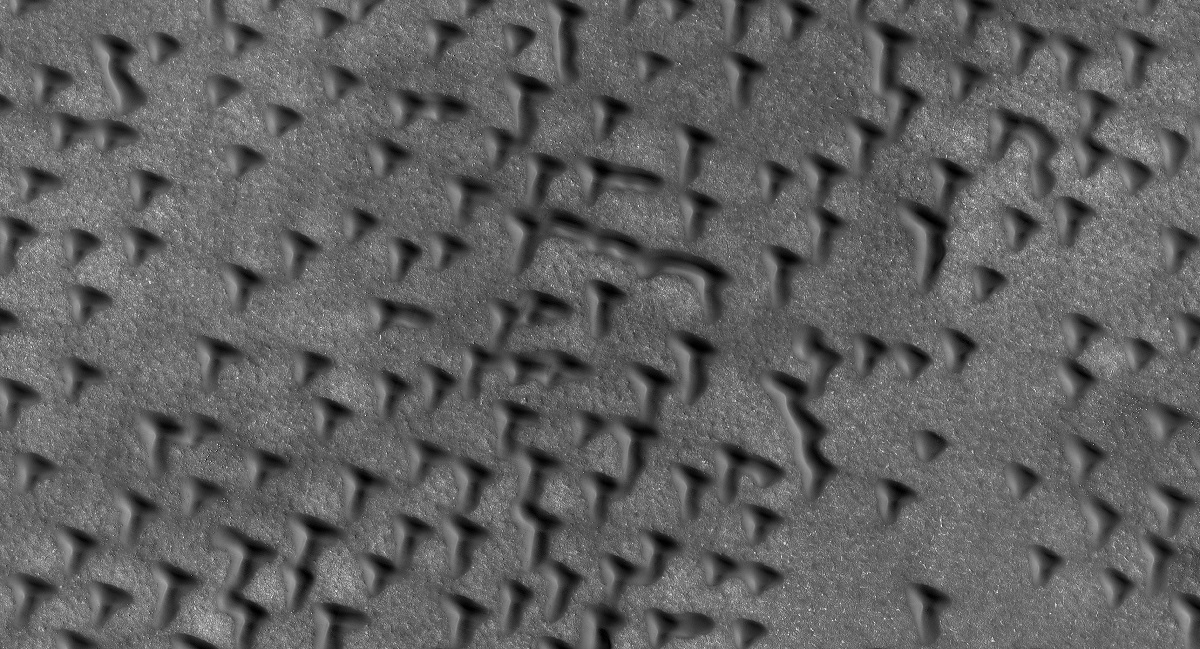 Polar Dunes Form as Piles of Basaltic Sands
Polar Dunes Form as Piles of Basaltic Sands
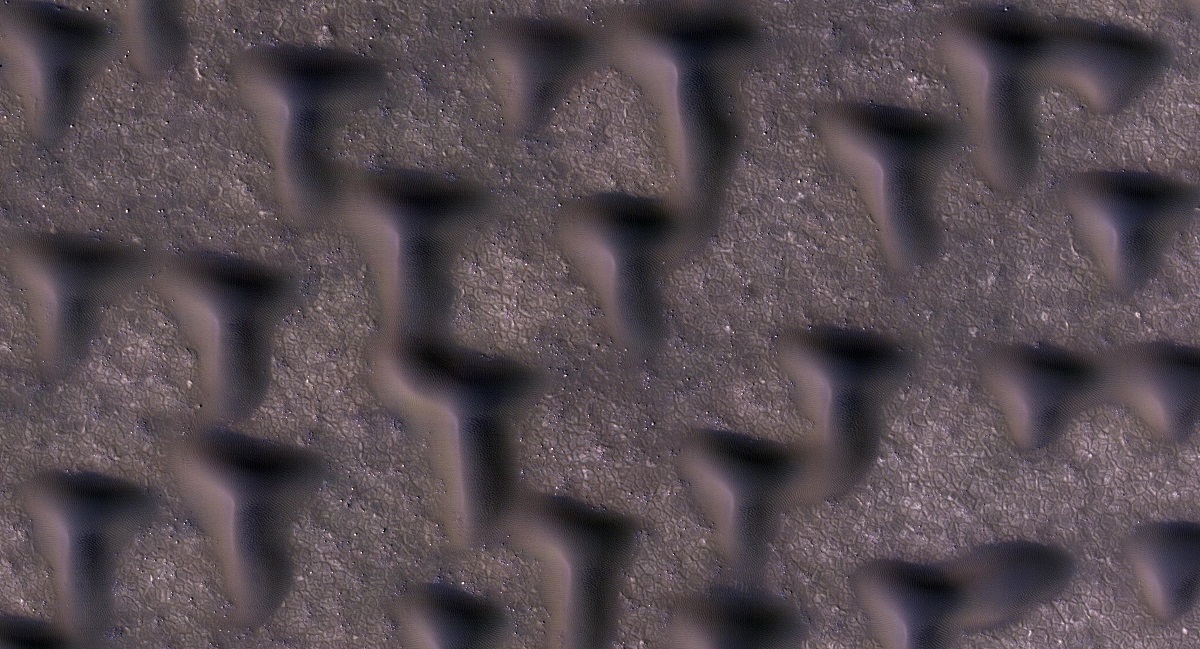 Enlarged Polar Dunes Form as Piles of Basaltic Sands
Enlarged Polar Dunes Form as Piles of Basaltic Sands
Elaborate Formation Mechanisms
Aeolian Processes
The Martian dunes owe their existence largely to aeolian, or wind-driven, processes. The role of Martian winds in shaping the landscape is unparalleled; they lift loose sediments and particles and deposit them in distinct formations. This process is responsible for most of the fascinating dune shapes seen on Mars today.
Volcanic Activity
Interestingly, some Martian dunes can also trace their lineage to volcanic events. In such specialized cases, these dunes are made up of finely ground volcanic ash. This additional layer of complexity in their formation mechanisms amplifies the need for a nuanced understanding of the planet’s geological history and its implications on current dune formations.
Seasonal Changes
The types and shapes of dunes can also undergo captivating transformations due to seasonal shifts in wind directions. As the Martian year progresses, these alterations can reshape existing dunes or even result in the emergence of entirely new structures. This ever-changing dune landscape offers a dynamic, ongoing narrative of Martian climatic alterations.
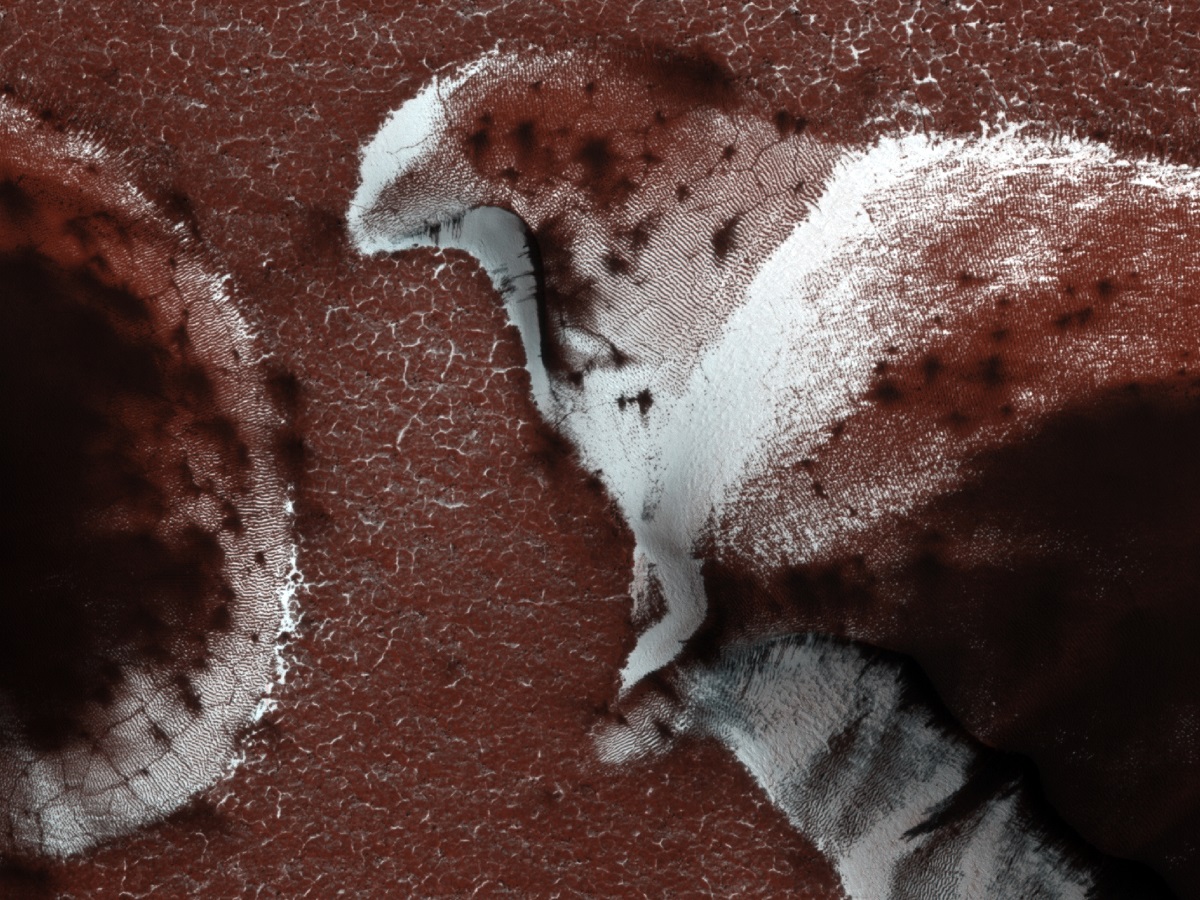 Late Springtime Defrosting of Northern Dunes
Late Springtime Defrosting of Northern Dunes
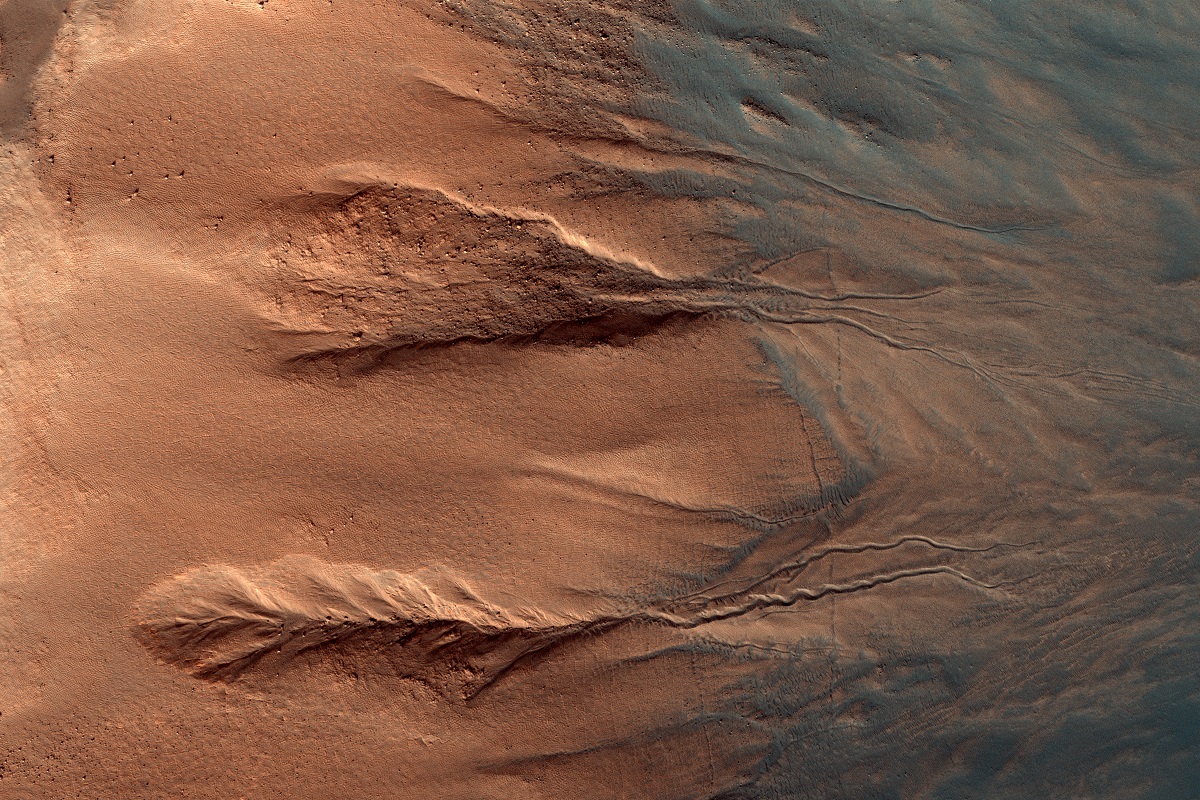 The Contrasting Colors of Crater Dunes and Gullies
The Contrasting Colors of Crater Dunes and Gullies
Detailed Physical and Chemical Properties
Grain Size
While most Martian dunes consist of grains falling within a size range of 50 to 500 micrometers, there are notable exceptions. Local conditions such as wind speed and sediment availability can lead to variations in grain size, subsequently affecting a dune’s overall stability and speed of migration across the Martian surface.
Composition
In general, Martian dunes are composed of basaltic materials. However, intriguingly, they may also contain trace elements like gypsum, sulfates, and even hematite. These additional components could offer invaluable clues to understanding Mars’ intricate mineralogical history and geology.
Color Variations
The dunes on Mars display a color palette ranging from dark browns and blacks to lighter shades. These color discrepancies are primarily influenced by the dunes’ mineral composition and by weathering processes that they may have undergone over time.
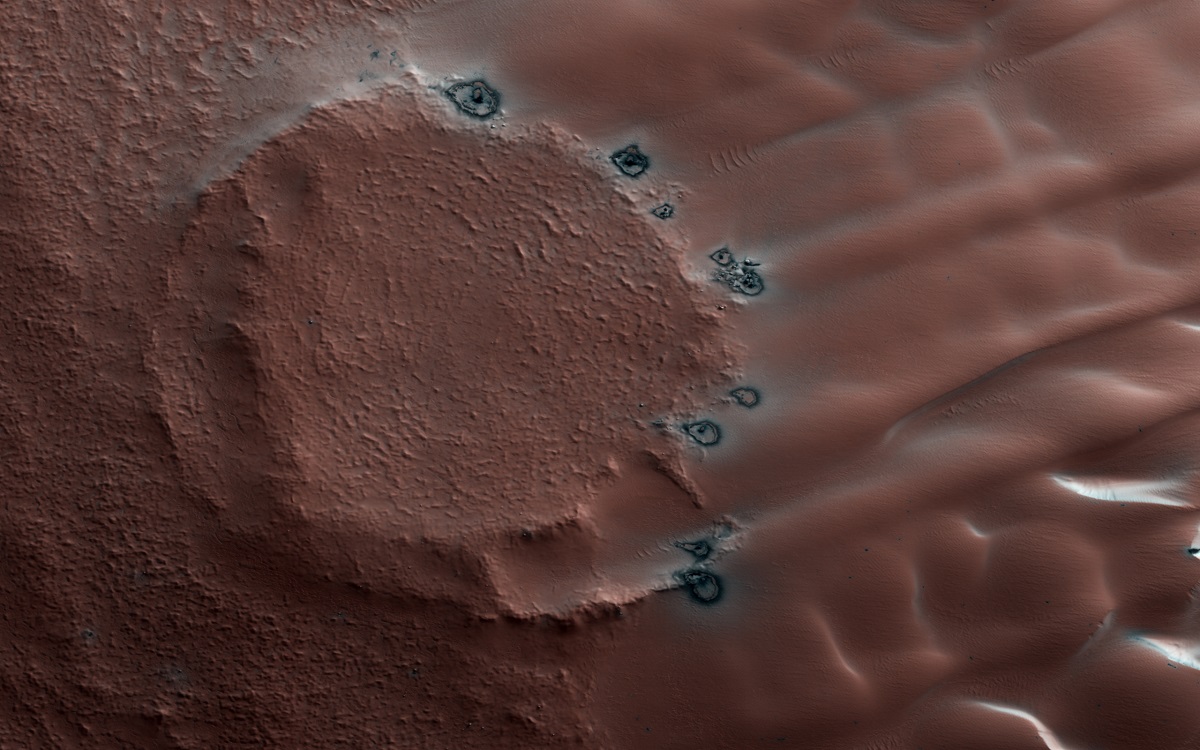 Defrosting Northern Dunes
Defrosting Northern Dunes
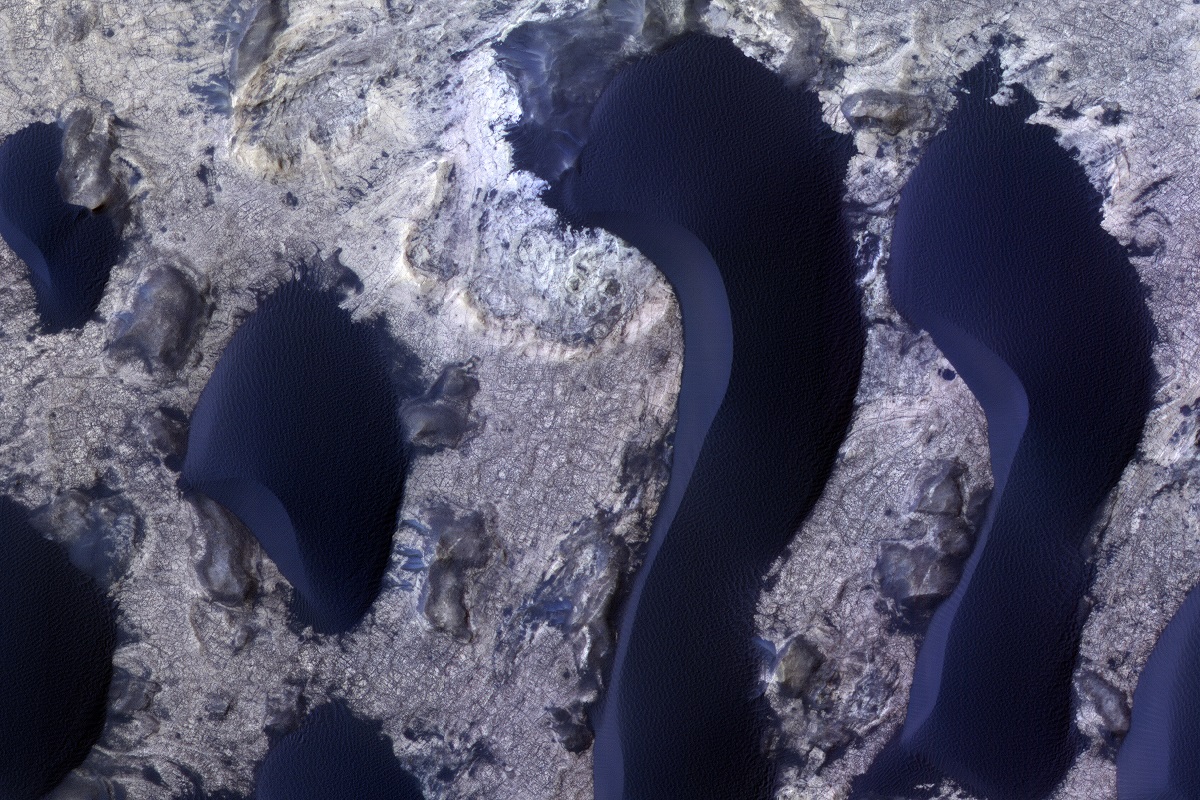 Dunes in Meridiani Planum
Dunes in Meridiani Planum
Implications for Martian Climate
Wind Patterns
The positioning, orientation, and types of Martian dunes contribute critical data for understanding the prevailing wind patterns and speeds on the planet. Such information is vital for the modeling of Martian climate and for understanding its evolution.
Seasonal Effects
By carefully observing the seasonal appearance, migration, and morphological transformations of Martian dunes, scientists can glean valuable insights into the cyclical climatic changes that Mars experiences. This information can be crucial for long-term climate studies.
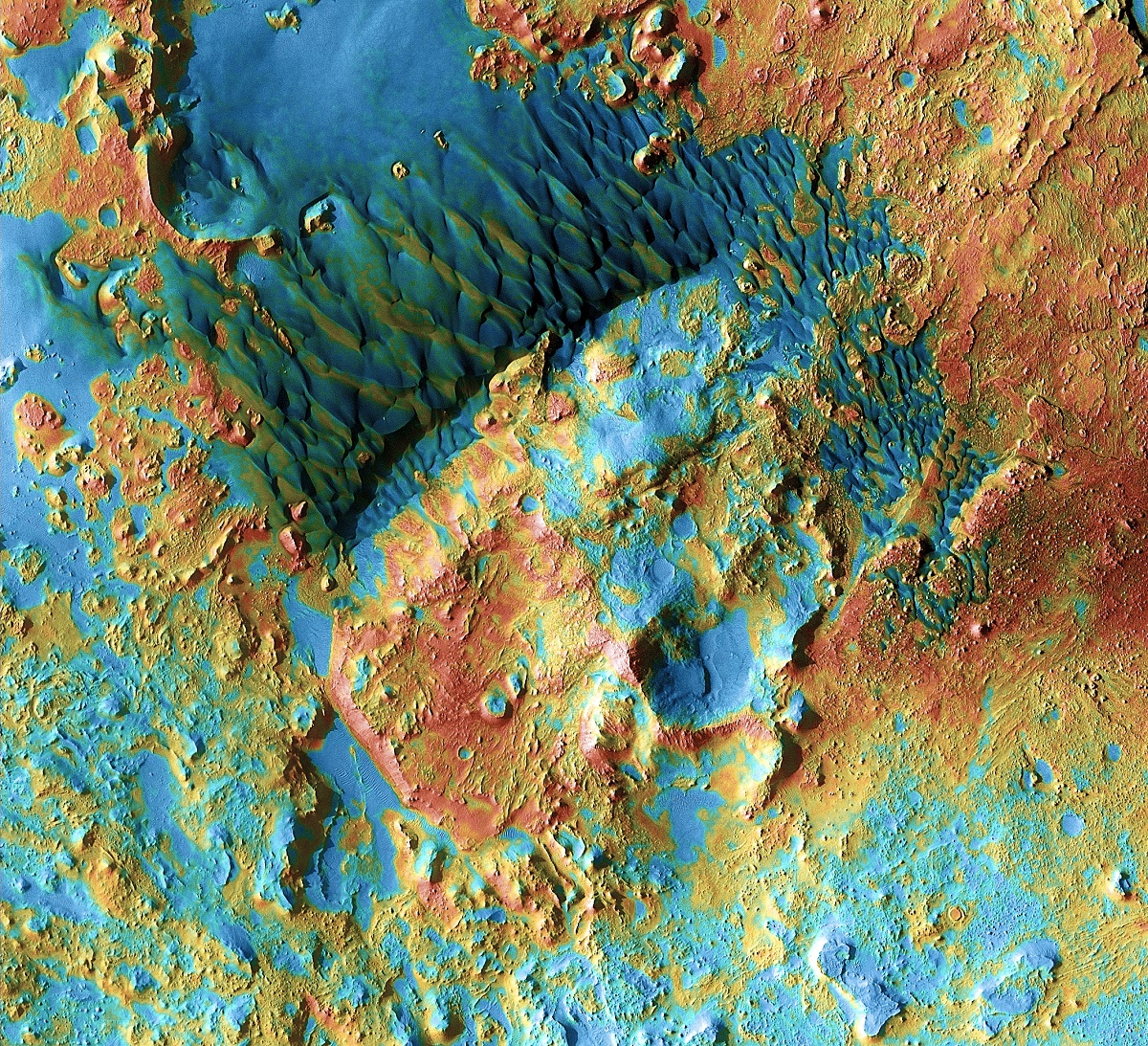 Arabia Dunes
Arabia Dunes
 The Contrasting Colors of Crater Dunes and Gullies
The Contrasting Colors of Crater Dunes and Gullies
Significance for Exploration and Science
Landing Sites
Understanding the stability or mobility of Martian dunes is essential for mission planning, especially concerning the safety of future landings and rover navigation. Site selection for these missions often heavily relies on the predictability of dune behavior.
Geological Insights
The comprehensive study of Martian dunes serves as a treasure trove of information regarding the planet’s geological past and ongoing processes. These dunes add rich contextual layers to our scientific understanding of Martian history.
Potential Habitats
In-depth study into the material composition, as well as the micro-environments surrounding Martian dunes, could yield essential insights into the potential habitability of these regions. This information is highly significant in the planning of future human exploration and possible habitation of Mars.
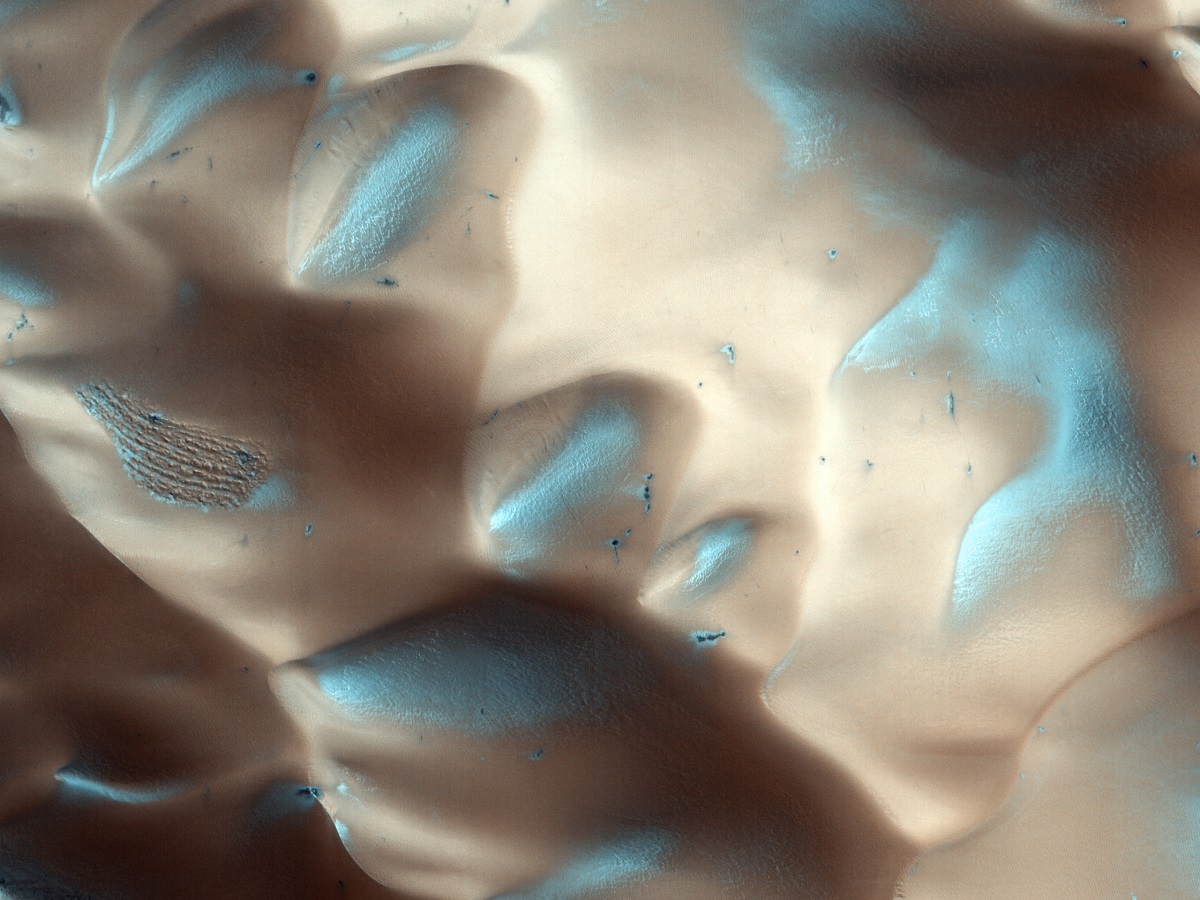 Frost Covered Dunes in a Crater
Frost Covered Dunes in a Crater
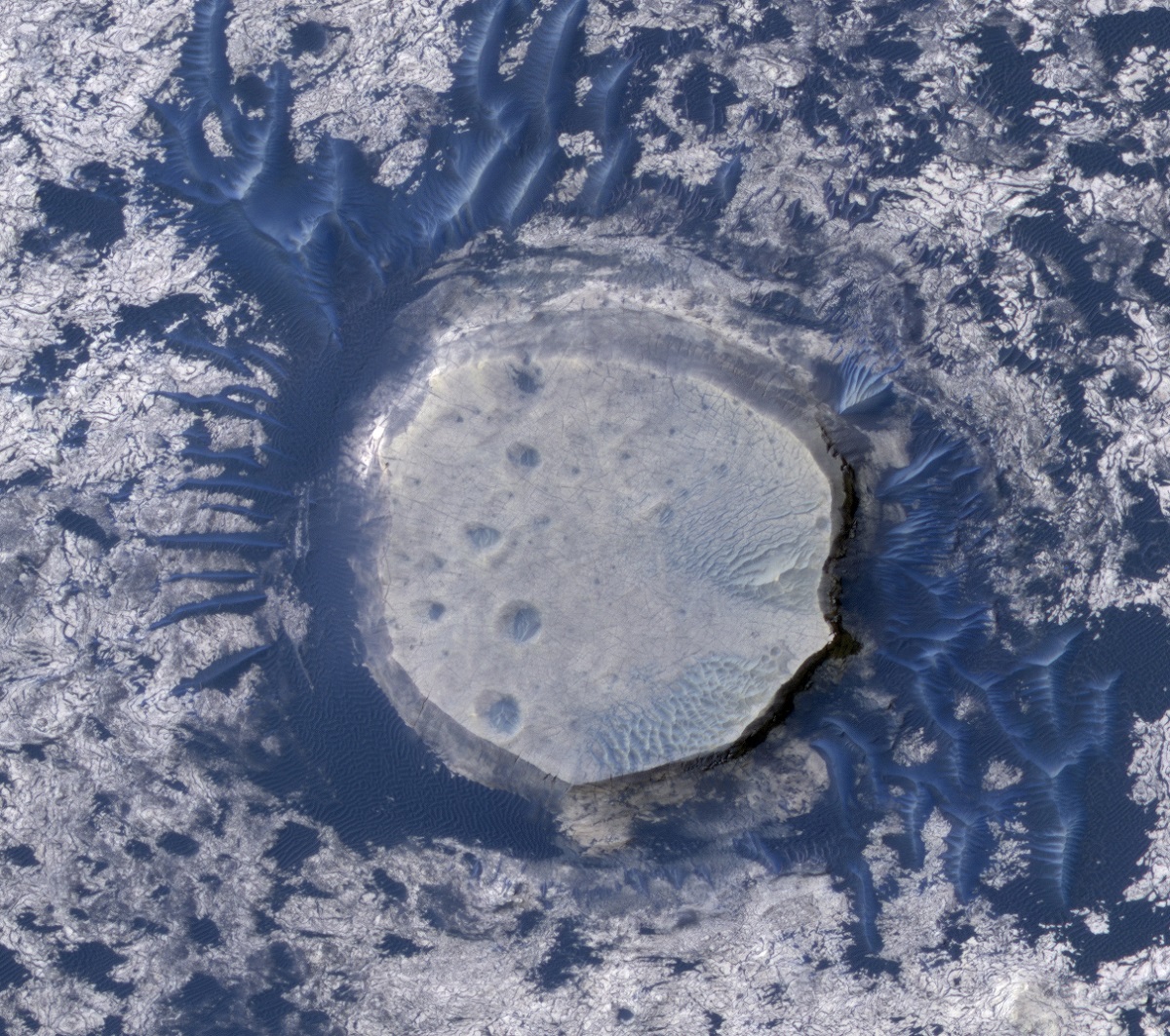 Dunes and Inverted Craters in Arabia Terra
Dunes and Inverted Craters in Arabia TerraMartian dunes are far more than mere wind-shaped heaps of sand; they are dynamic geological features that offer a wealth of information about Mars. Their various types, formation mechanisms, and properties provide crucial clues to understanding Martian geology, climate, and even potential as a future destination for human explorers. By continuing to study these enigmatic formations, we can hope to unlock further secrets held within the windswept landscapes of the Red Planet.
Check out our 3D Mars Learning Center for more information on Mars and our Top 10 Largest Dunes on Mars. You can also learn more at: NASA Mars Exploration.
More About Mars
Contact us today to learn more about our 3D services and how we can help you achieve your goals.
